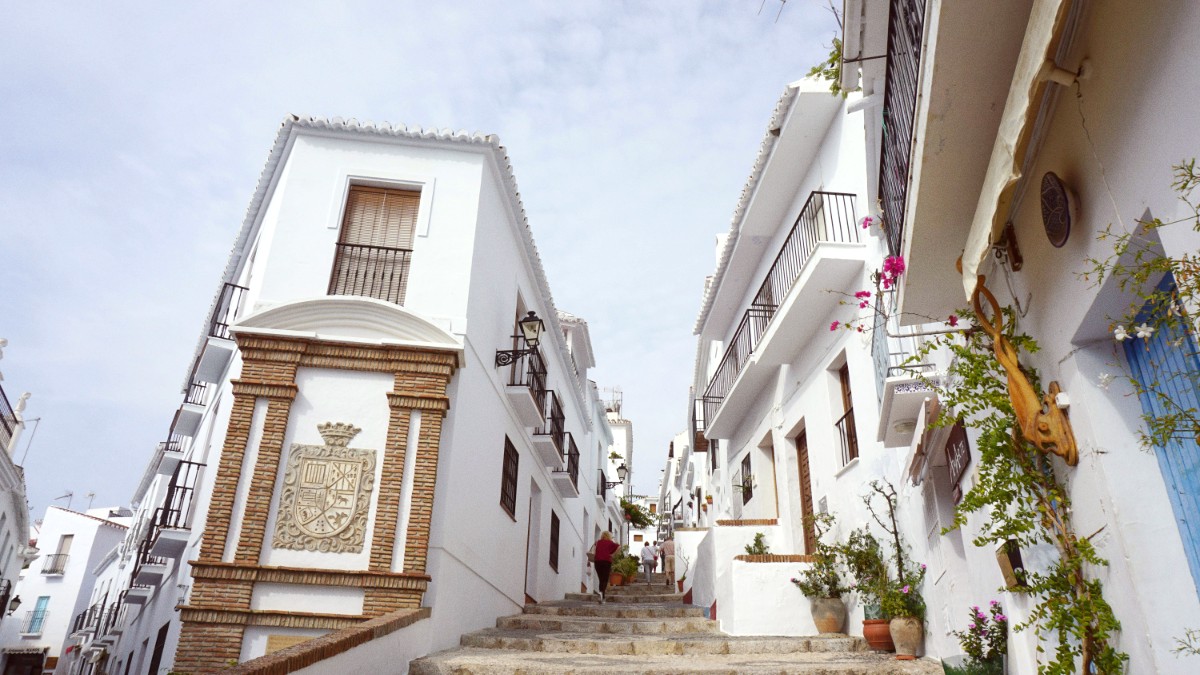
Andalucia, Spain
The town lies approximately 50 kilometers (31 miles) east of Málaga city. Its position brings a relatively mild climate throughout the year, protected by the mountains from colder northern winds. The coastline itself features varying topography. Some areas present wide, open beaches, while others hide smaller, rocky inlets only reachable by foot or boat. The natural park of Maro-Cerro Gordo, located just east of Nerja, protects much of this rugged coastline. This area preserves a rare stretch of untouched Mediterranean landscape. It shows how Nerja balances development with a respect for its natural surroundings.
Nerja's history stretches back tens of thousands of years. The most telling evidence lies within the Cueva de Nerja, or Nerja Caves. Discovered in 1959, these vast underground chambers hold impressive stalactites and stalagmites. More remarkably, they contain some of the oldest cave paintings in Europe. These paintings, dating back over 42,000 years, suggest a Neanderthal presence, pushing back the timeline of human art.
Roman influence followed. During Moorish rule, Nerja was known as Narixa, meaning "abundant spring" or "rich in water." Narixa grew into a significant agricultural center, known for its silk production and sugar cane cultivation. This period shaped much of the local agriculture and architectural styles. The Reconquista brought Christian rule in 1487. Frequent pirate attacks led to the construction of numerous watchtowers along the coastline. These towers, many of which remain today, served as an early warning system.
Nerja's history stretches back tens of thousands of years, offering a compelling narrative that begins in prehistoric times. The most telling evidence of this ancient past lies within the Cueva de Nerja, or Nerja Caves. Discovered in 1959, these vast underground chambers hold impressive stalactites and stalagmites. More remarkably, they contain some of the oldest cave paintings in Europe. These paintings, dating back over 42,000 years, suggest a Neanderthal presence, pushing back the timeline of human art.
The 19th century brought more prosperity with the revival of sugar cane production and the construction of the Águila Aqueduct, an engineering marvel still in use. The 20th century saw the gradual rise of tourism, especially after the discovery of the caves. This shift transformed Nerja from a fishing and agricultural town into a popular holiday destination.
Oldest cave paintings in Europe (Cueva de Nerja).
Strategic coastal settlements.
Town known as Narixa, silk and sugar cane production.
Shift to Christian rule in 1487.
Construction of coastal watchtowers.
The local economy relies heavily on tourism. This sector supports a wide range of services, from hotels and restaurants to tour operators and souvenir shops.
The local economy relies heavily on tourism. This sector supports a wide range of services, from hotels and restaurants to tour operators and souvenir shops.
Fishing remains a part of the town’s heritage, with fresh seafood a staple of local cuisine. Agriculture also contributes, notably the cultivation of subtropical fruits like avocados and mangoes, benefiting from the region’s mild climate.
Nerja has preserved much of its charm and historical character. Its history lives in the traditions, the local cuisine, and the very fabric of the town.
Nerja offers a detailed picture of Andalusian life, blending historical depth with modern leisure. Its location on the Costa del Sol, within Málaga Province, marks it. This position grants visitors access to both pristine beaches and challenging mountain trails.
The town’s population, around 22,000 residents as of 2023, maintains a strong connection to traditions.
Coastal charm meets mountainous grandeur, offering varied activities.
From prehistoric caves to Moorish influence and pirate defenses.
Hot, dry summers and mild winters ideal for year-round travel.
The town’s population, around 22,000 residents as of 2023, maintains a strong connection to traditions.
Costa del Sol, Málaga Province, Andalucía, Spain
Approximately 22,000 residents (2023)
Mediterranean: hot, dry summers; mild winters
The Nerja Caves hold some of Europe's oldest cave paintings, suggesting Neanderthal presence 42,000 years ago.
Known as Narixa, the town flourished as an agricultural center, producing silk and sugar cane.
The 20th century transformed Nerja into a popular holiday destination after the discovery of its caves.